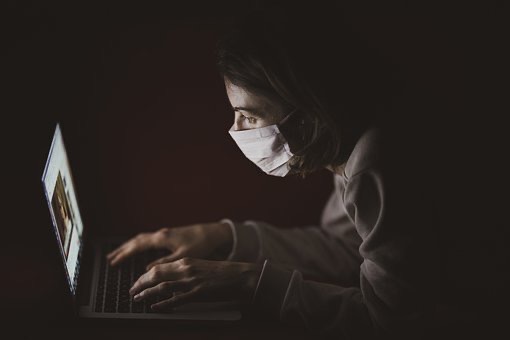
The plague of the twentieth century was the most terrible plague in human history. The plague began in China and reached the Italian city of Sicily in 1347, engulfing the whole of Europe and destroying settlements. An estimated 75 million to 200 million people died as a result of the epidemic. About 30% of Europe was severely affected. By 1400 the plague had halved the population of England, and for the next one and a half centuries Europe could not reach the level of its population that it had before the plague.
Doctors at the time thought the disease was caused by the stench of unclaimed bodies or similar environmental pollution, while the general public thought it was a torment or the result of earthquakes.
Many Christians accused the Jews of poisoning the water, which caused the epidemic, and as evidence that the number of Jews dying from the plague was very small. As a result of this accusation, the Jewish settlements were destroyed and they were killed. At the time, no one was under the illusion that the disease could be linked to bacteria found in fleas. This terrible epidemic had a far-reaching effect on Europe, with large numbers of peasants working on the feudal lands dying of it, resulting in a failure to cultivate the land, increasing the wages of the peasants and exacerbating feudalism.
Shocked Frustration and despair prevailed in the arts, the meaninglessness of life began to be expressed in painting, and ordinary people became uncertain about life. Between 2010 and 2015, there were only 3248 cases of plague from all over the world, in which 1584 deaths occurred. Today, plague is a treatable disease due to antibiotics. Smallpox is a disease that is three thousand years old, great kings died of this disease.
By the eighteenth century, one in ten children born in Sweden and France and one in seven in Russia died of smallpox. In Europe alone, 60 million people died of smallpox in this century. Until the 1950s, 50 million people were infected with smallpox each year, but by 1967 that number had dropped to 15 million. The last case of smallpox was discovered in Somalia in 1977, and by 1980, as a result of the tireless efforts of scientists, the world was declared free of smallpox. The disease that has plagued humanity for centuries has finally been defeated by medical science. There is a long list of diseases and epidemics that man has been fighting for centuries.
Many of these diseases have been defeated by medical science and some vaccines have been invented, which can be used to protect against diseases such as polio. Diseases such as whooping cough, diphtheria, tuberculosis and typhoid, which used to be deadly to humans, are now almost helpless in the face of antibiotics and vaccines. The greatest discovery of medical science in the twentieth century is “antibiotics”.

It all started with the invention of penicillin. Earlier, people used to rub their heels in the hospital suffering from various infectious diseases. It is well known that bacteria and fungi combine to form antibiotics, which can kill disease-causing bacteria, but Sir Alexander Fleming is credited with making the first truly antibiotic. Goes to the head of those who did a great favor to humanity by discovering penicillin. In World War II, antibiotics saved millions of lives.
There is no doubt that epidemics and diseases still exist, for which no cure has yet been discovered, such as HIV and the latest corona virus, but we also have the fact that many epidemics, such as The risk of swine flu, Ebola, Zika virus or SARS is not as high as it was a few years ago. People living with HIV or cancer who used to face certain deaths thirty or forty years ago can now afford expensive treatment to survive and even complete treatment for many types of cancer. Yes, many patients are recovering well. I’m not a doctor, but I’m definitely interested in medical science.
I am a “fan” of antibiotics, but there is also the fear that overeating may cause the body to develop resistance to antibiotics, which in medical parlance is called RESISTANCE TO ANTIBIOTICS. In fact, some diseases are viral and some are bacterial. Because viral diseases are spread by viruses, antibiotics, such as the corona virus, do not work in them, but antibiotics for bacterial diseases are targeted. The good news is that a few years ago, scientists developed an antibiotic called TEIXOBACTIN, which is said to be able to kill not only all kinds of bacteria. In fact, eating it will not create resistance in the body. Scientists invent vaccines for viral diseases, such as polio, measles, flu and hepatitis, which we must administer.
According to the limited research that has been done on the corona virus so far, chloroquine is an effective medicine for malaria. It is also effective in treating pneumonia caused by corona virus. Keep in mind that deaths are not caused by a virus, but in most cases by pneumonia. So keep in mind, the corona virus will also become a vaccine. We should pray to GOD and also get medicine from the doctor.
Don’t forget your feedback .